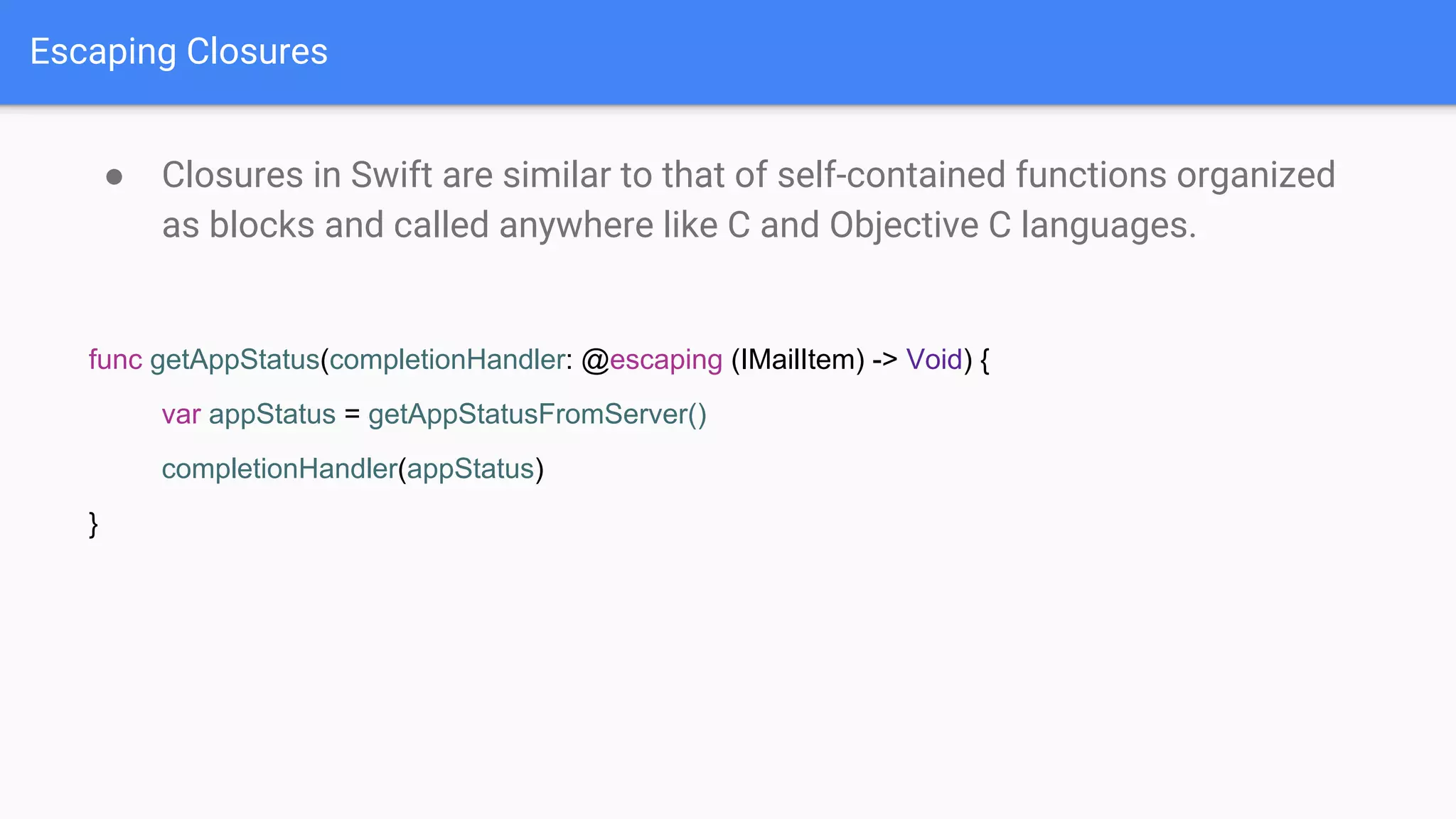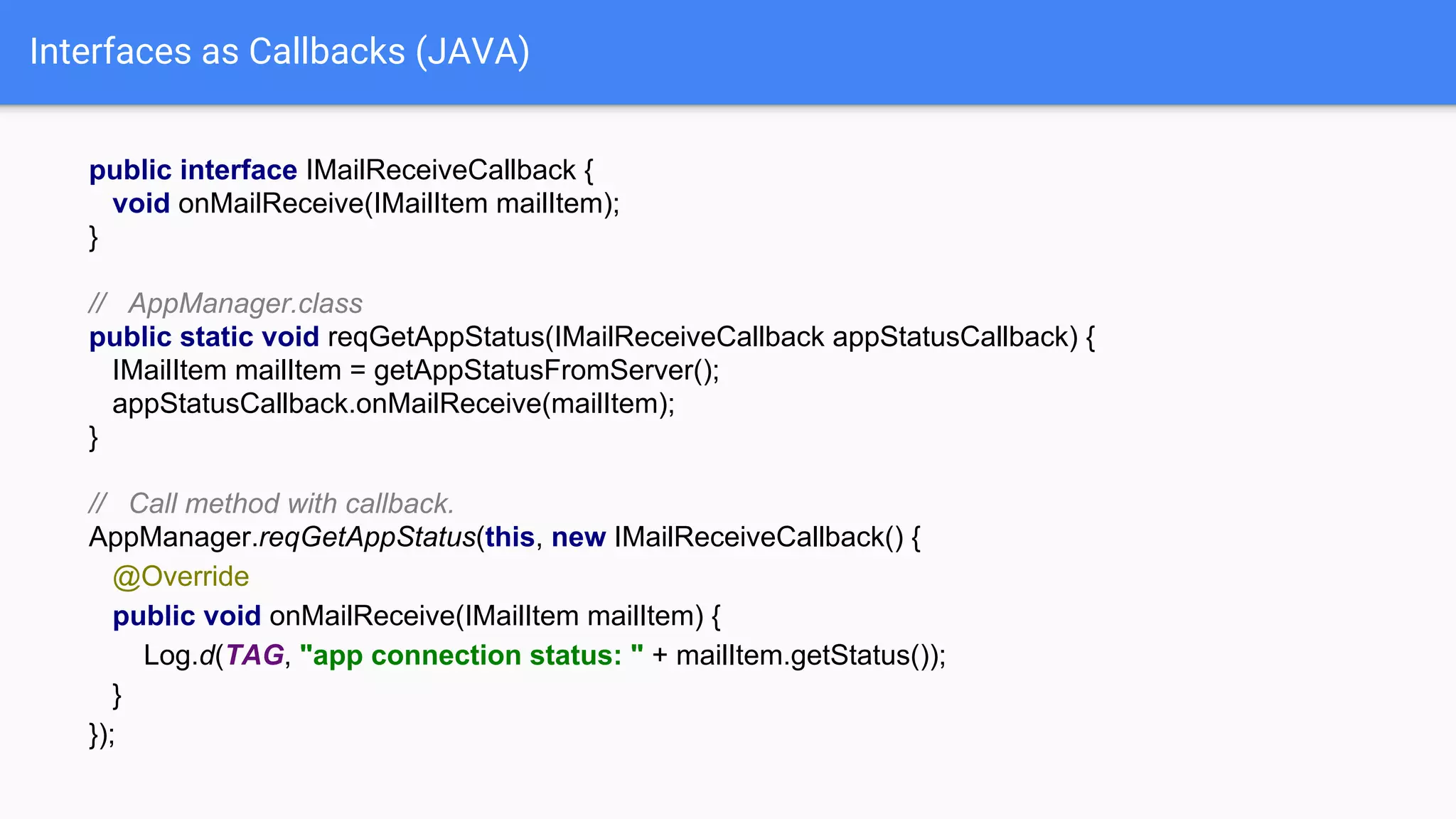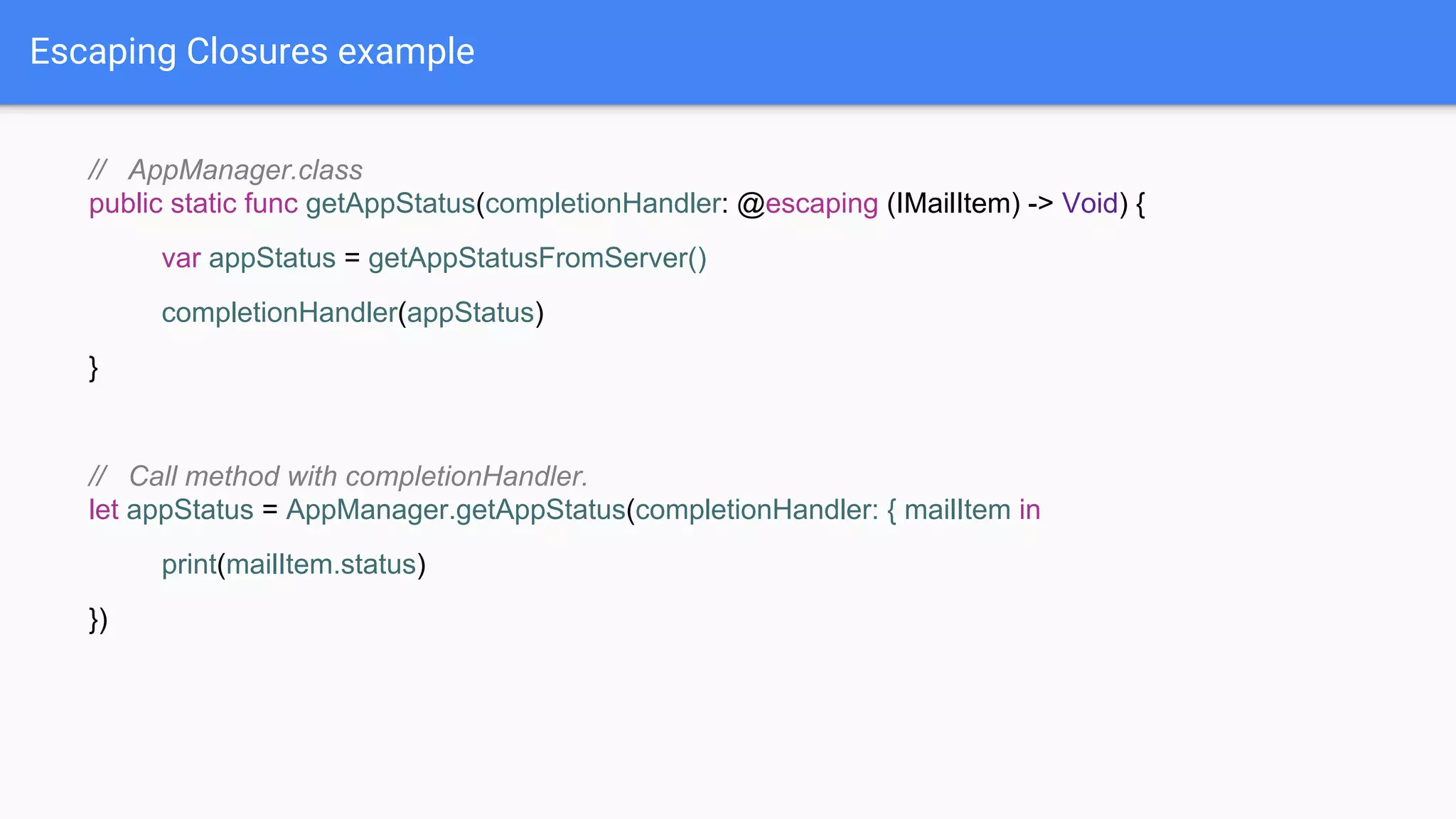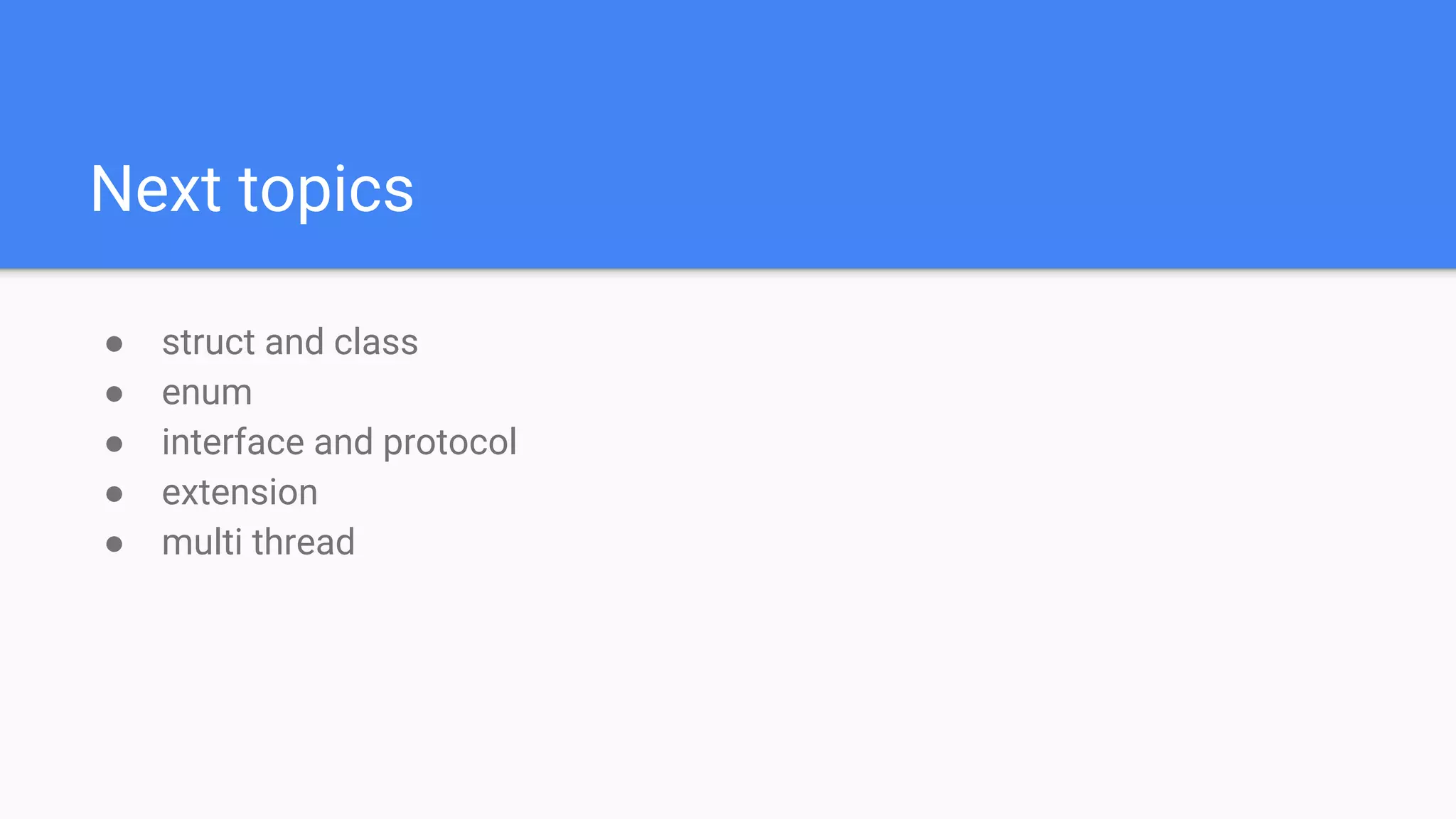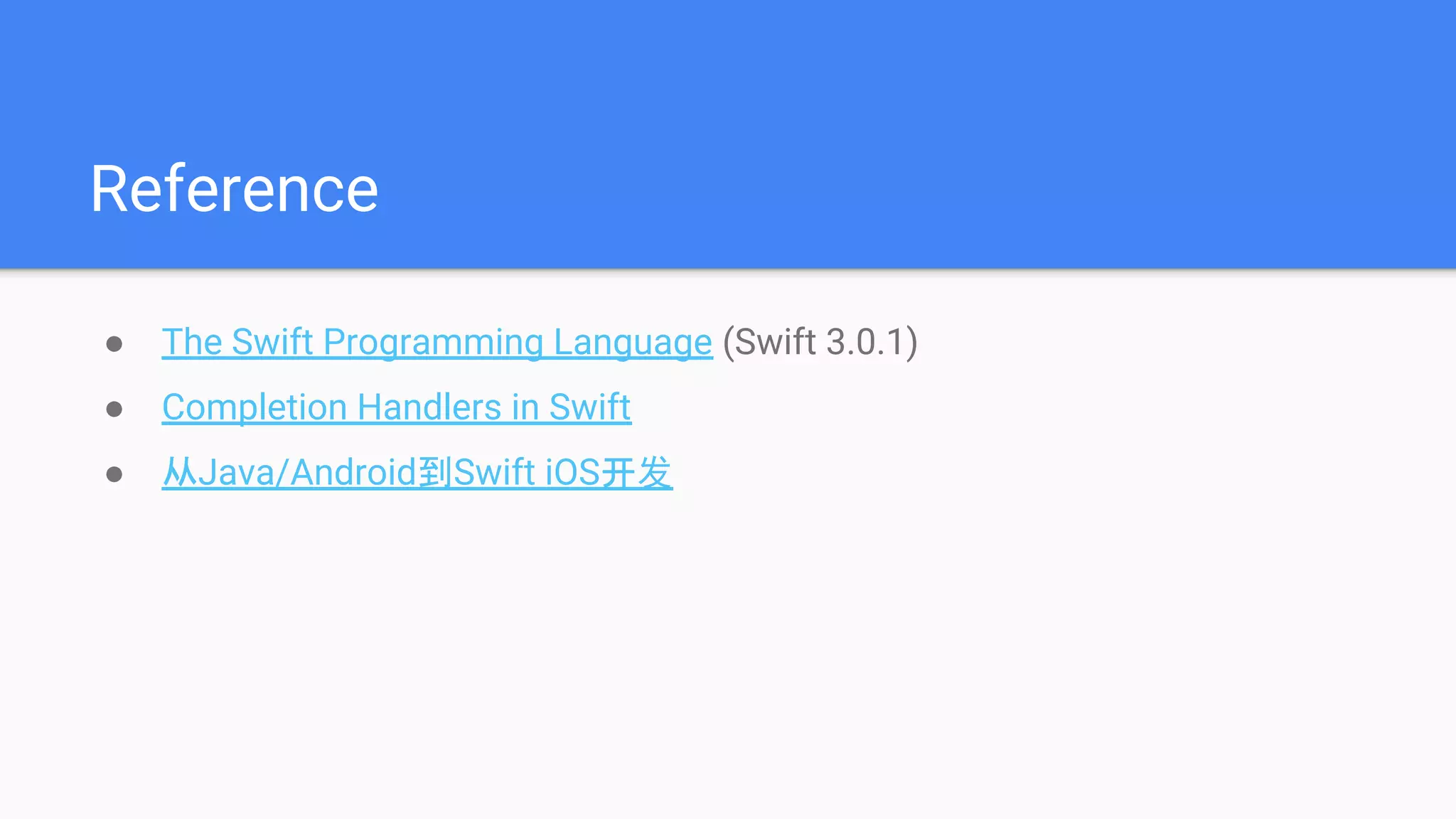Swift provides several differences from Java/Android for language features, including:
1. Access control is handled through private, internal, open instead of private, default, protected, public. Optionals and nil are used to represent empty or missing values.
2. Closures allow blocks of code to be passed around as first-class functions, similar to blocks in Objective-C. Collection types use arrays and dictionaries instead of lists.
3. Control flow includes range operators for for loops and switch statements without break. Escaping closures can capture values from the current scope and are used for callbacks.
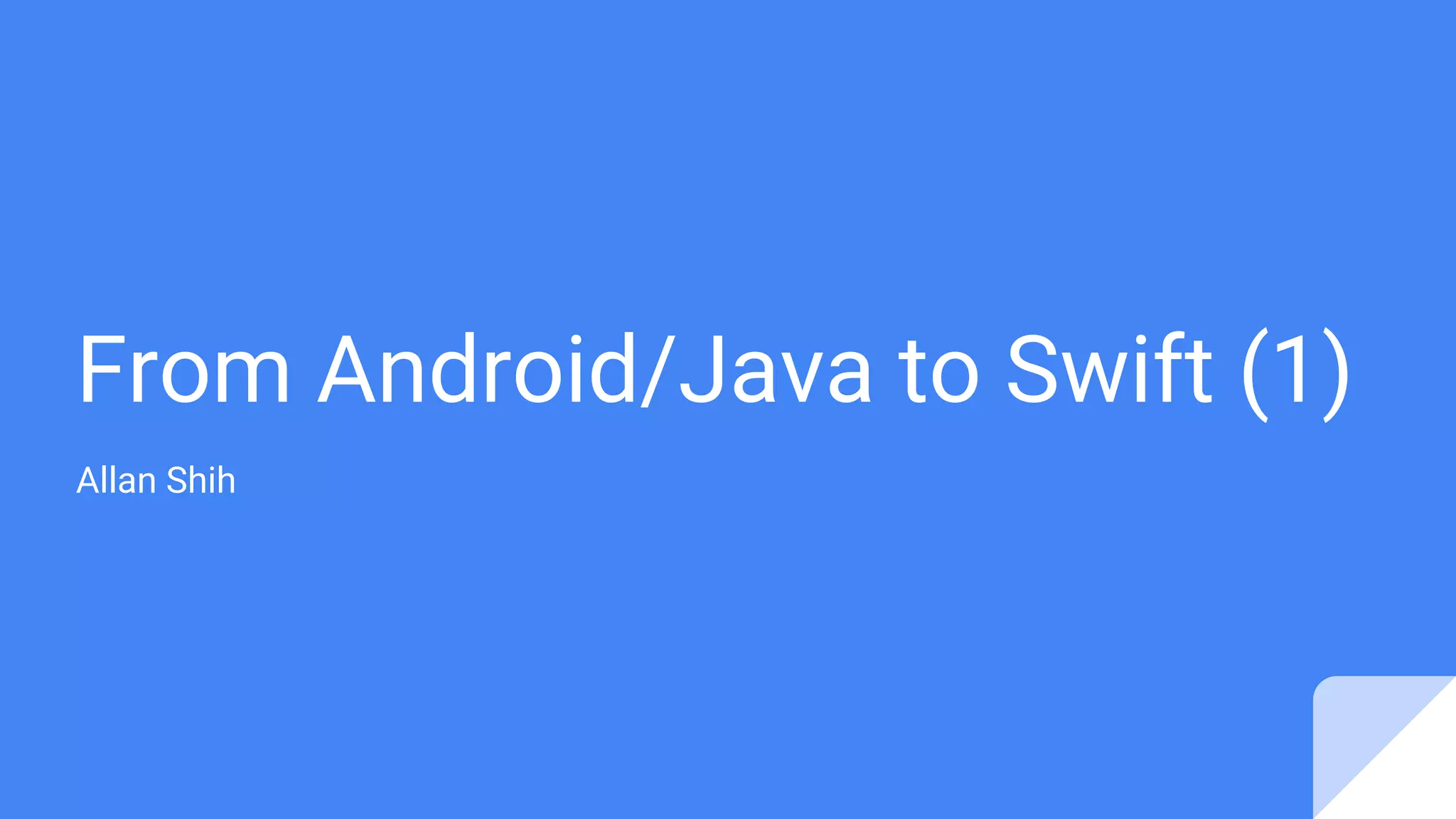
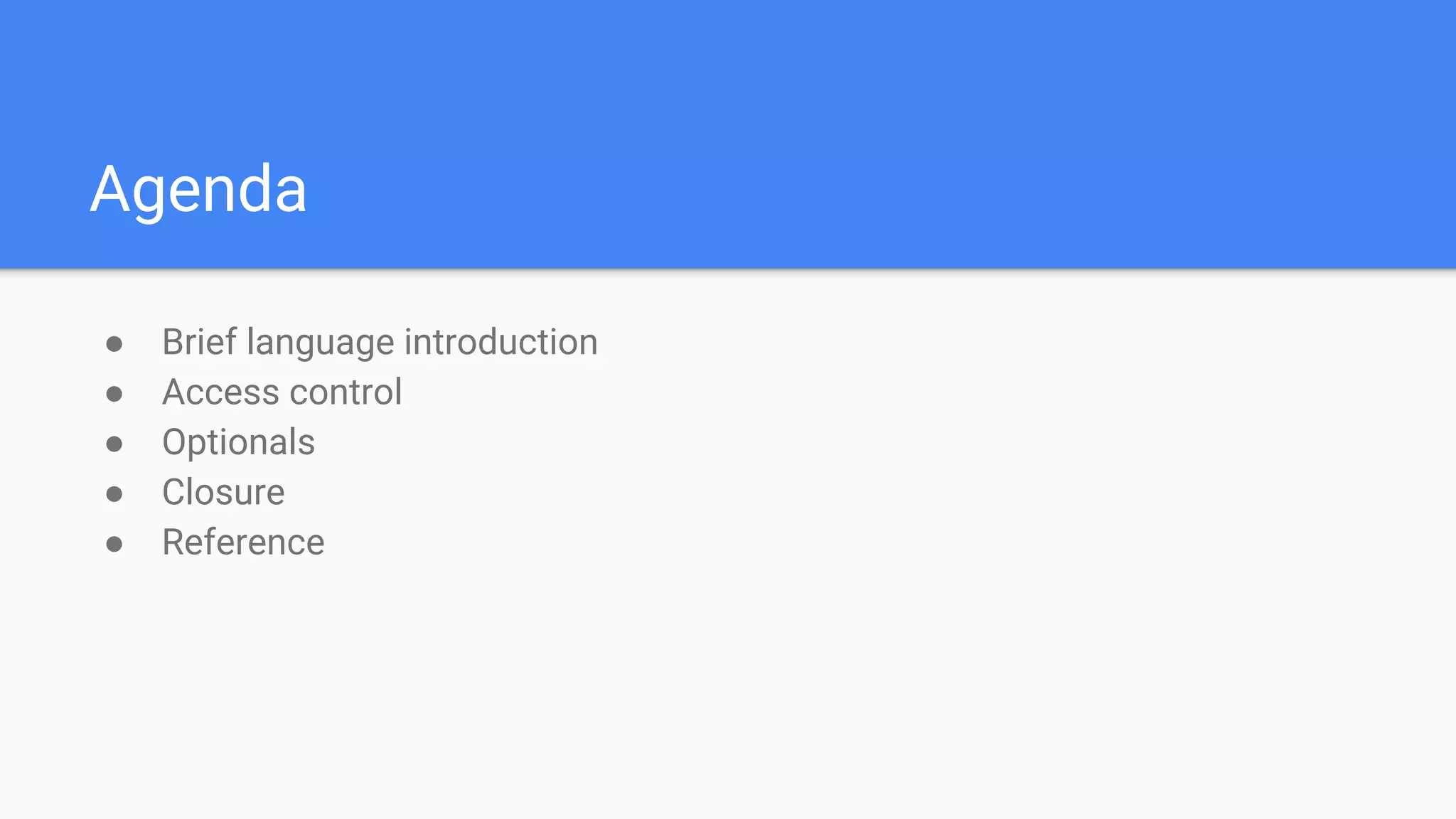
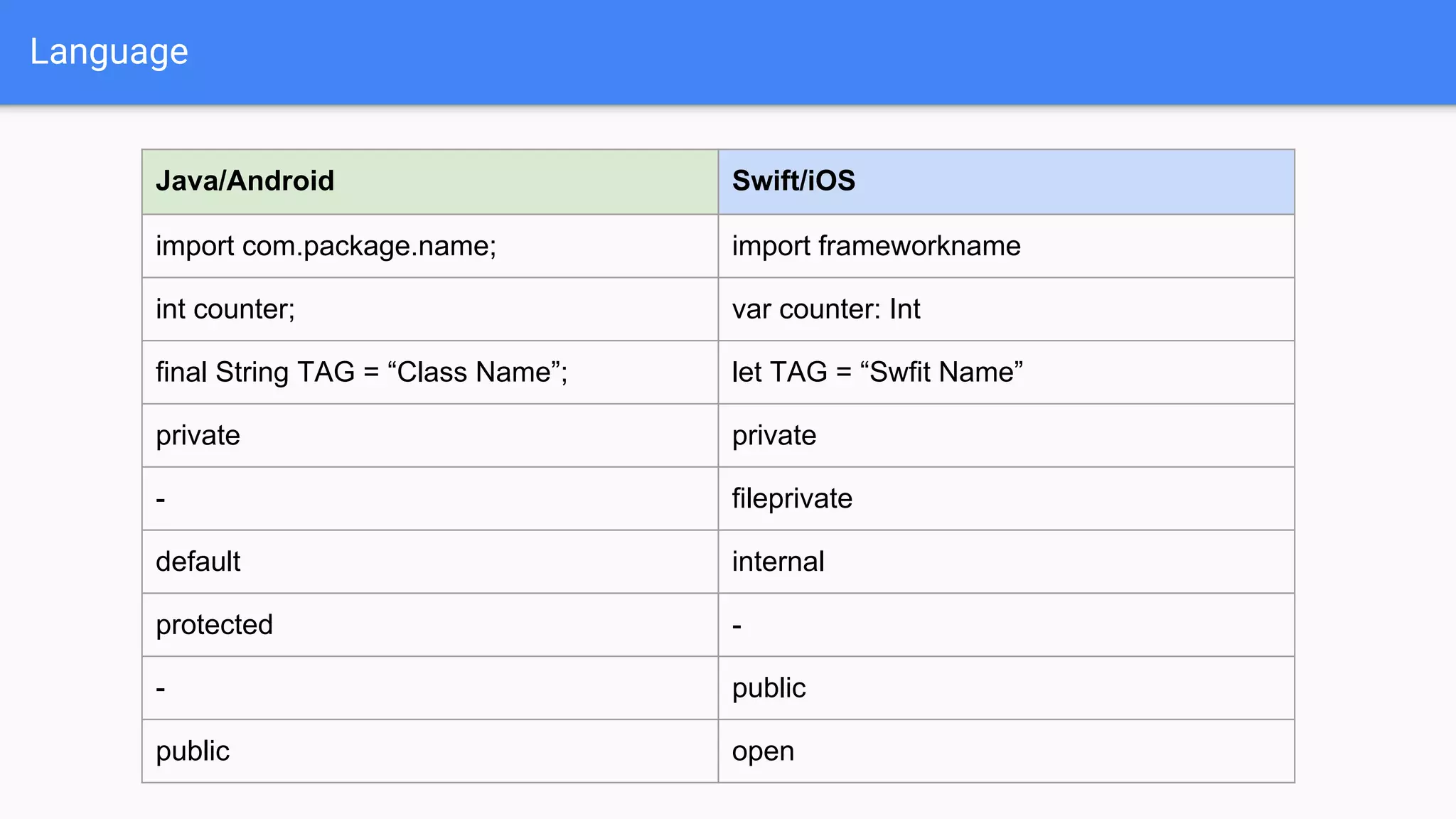
![Objects
Java/Android Swift/iOS
class Foo extends Bar {} class Foo: Bar
interface Baz {} protocol Baz
class Bar implements Baz {} class Bar: Baz
Foo() init()
void doWork(String arg) {] func doWork(arg: String) -> Void
String doWork(String arg, int type) {] func doWork(arg: String, type: Int) -> String
Foo item = new Foo(); var item = Foo()
item.doWork(arg); item.doWork(arg)
item.doWork(arg, type); item.doWork(arg, type: test)](https://image.slidesharecdn.com/fromandroid2fjavatoswift-180706024806/75/From-android-java-to-swift-1-4-2048.jpg)
![Collection Types
Java/Android Swift/iOS
int [] someInts = new Int[10]; var someInts = [Int]()
String [] shoppingList = {“Eggs”, “Milk”}; var shoppingList = [“Eggs”, “Milk”]
Map<String, String> airports = new
HashMap<>();
var airports = [String: String]()
Map<String, String> airports =
new HashMap<>() {{
put(“YYZ”: “Toronto Pearson”);
put(“DUB”: “Dublin”)
}};
var airports = [“YYZ”: “Toronto Pearson”,
“DUB”: “Dublin” ]
airports.put(“LHR”, “London”); airports[“LHR”] = “London”](https://image.slidesharecdn.com/fromandroid2fjavatoswift-180706024806/75/From-android-java-to-swift-1-5-2048.jpg)
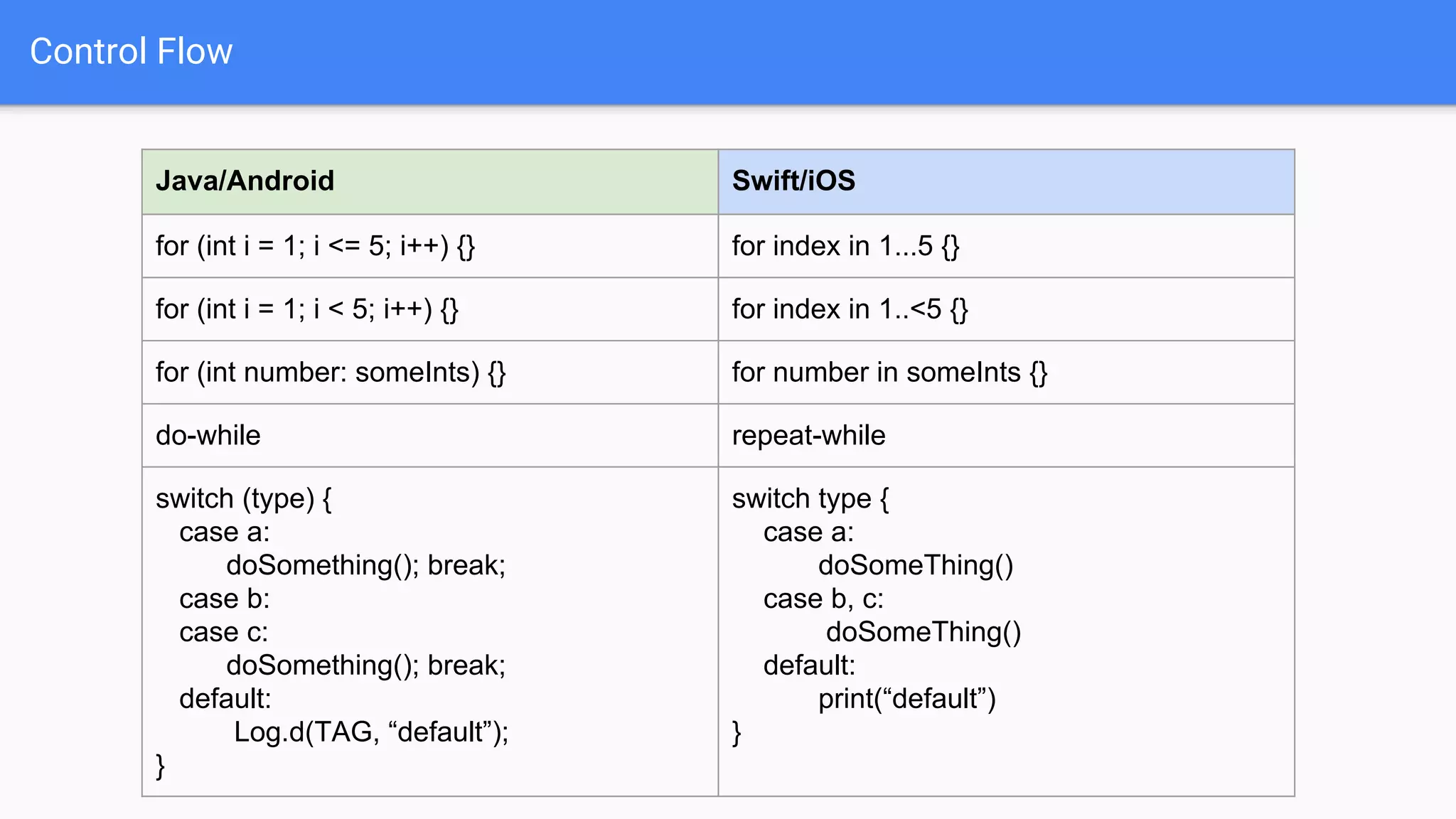
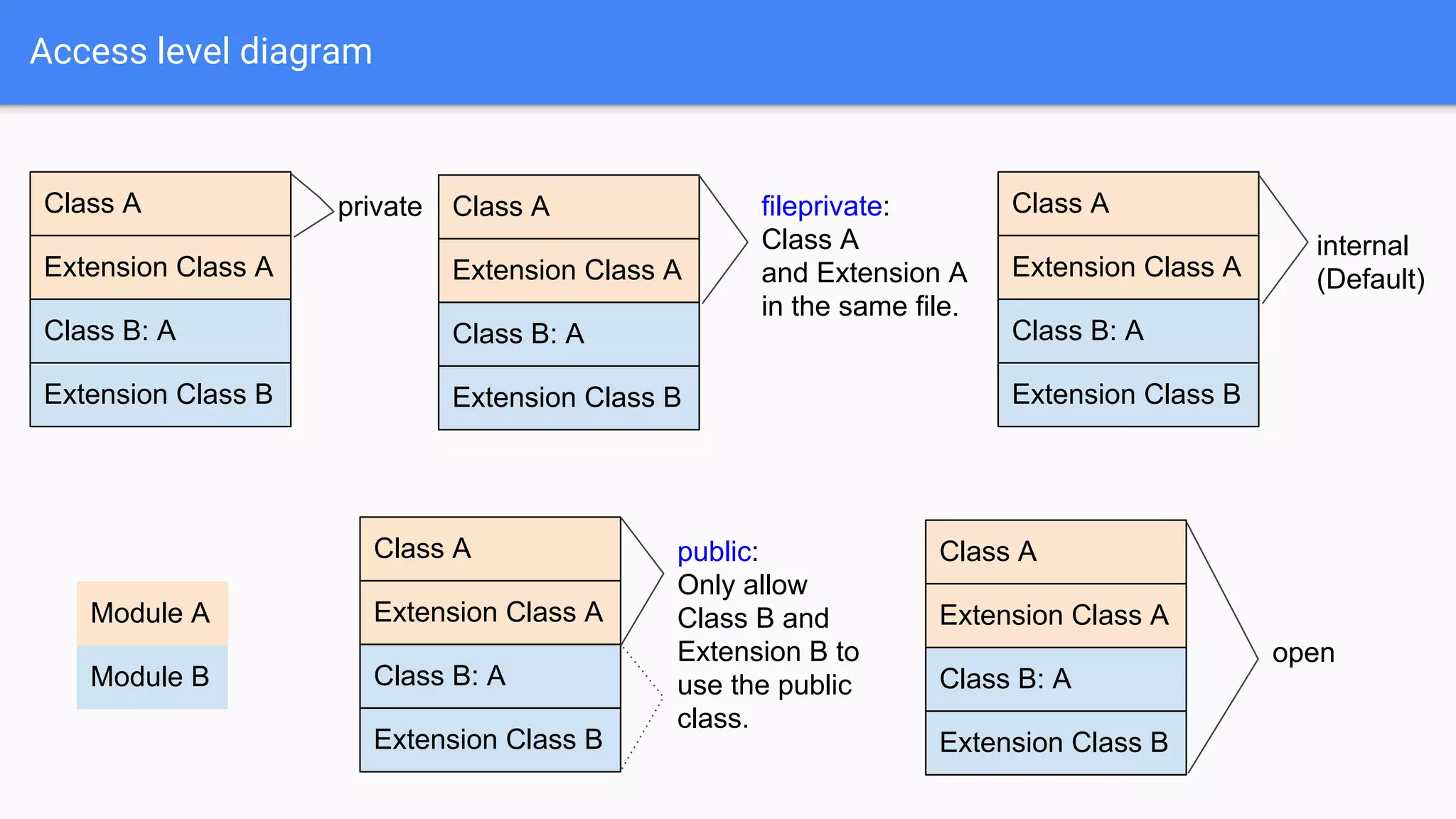
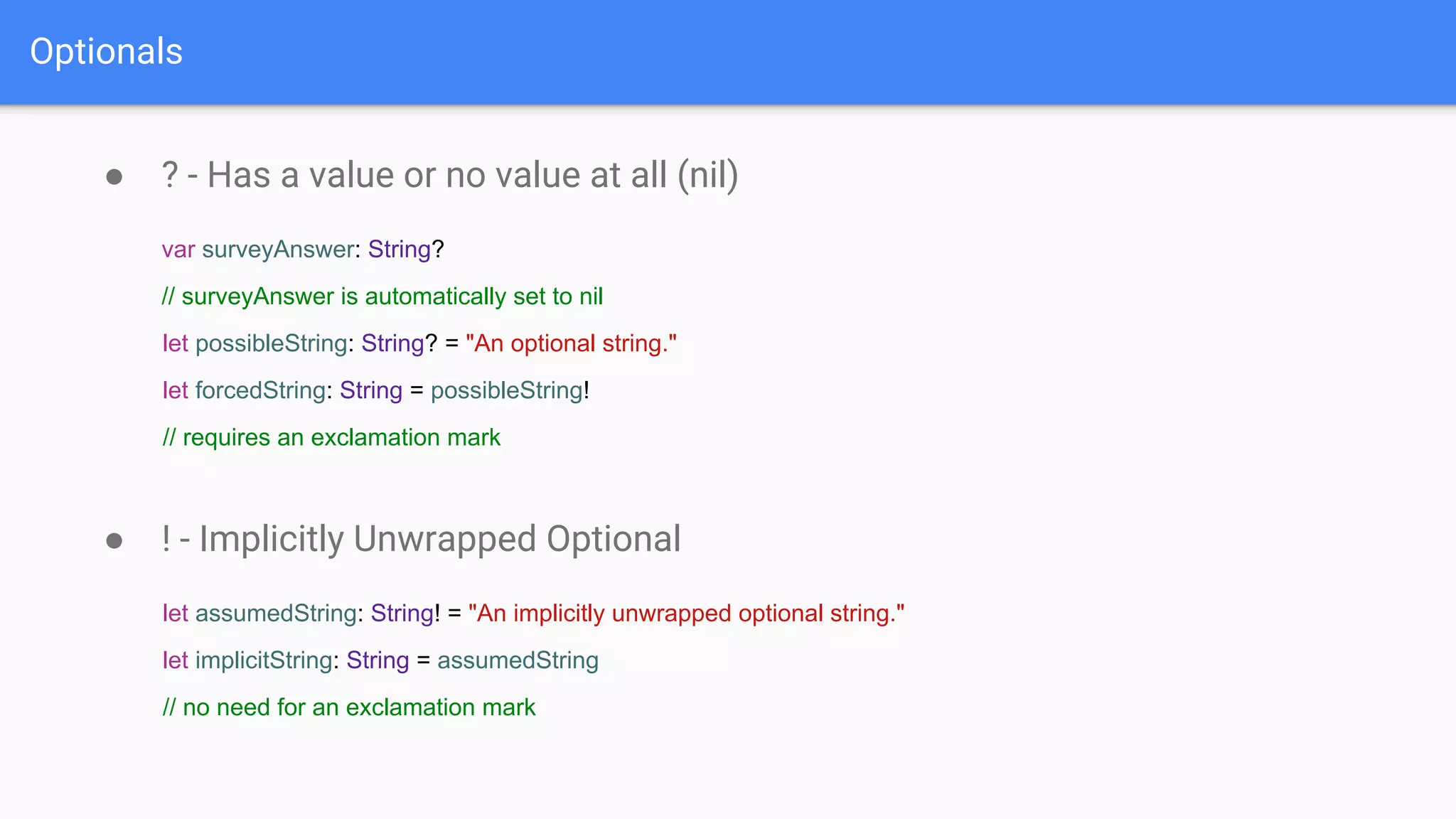
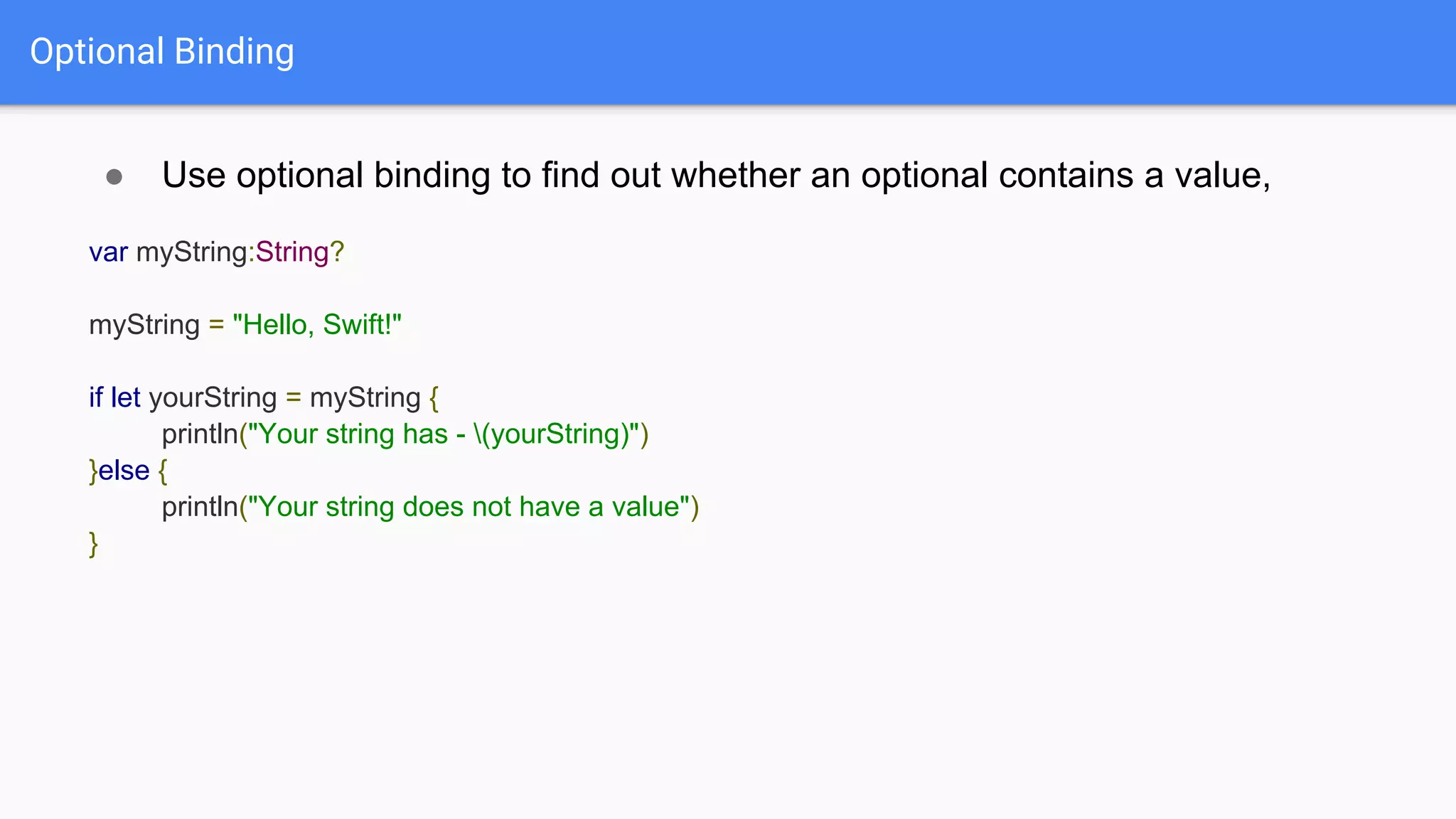
![guard
● A guard statement, like an if statement, executes statements depending on
the Boolean value of an expression.
func greet(person: [String: String]) {
guard !person.isEmpty,
let name = person["name"] else {
return
}
print("Hello (name)!")
guard let location = person["location"] else {
print("I hope the weather is nice near you.")
return
}
print("I hope the weather is nice in (location).")
}
func greet(person: [String: String]) {
if !person.isEmpty {
if let name = person["name"] {
print("Hello (name)!")
if let location = person["location"] {
print("I hope the weather is nice in (location).")
} else {
print("I hope the weather is nice near you.")
}
}
}
}](https://image.slidesharecdn.com/fromandroid2fjavatoswift-180706024806/75/From-android-java-to-swift-1-10-2048.jpg)
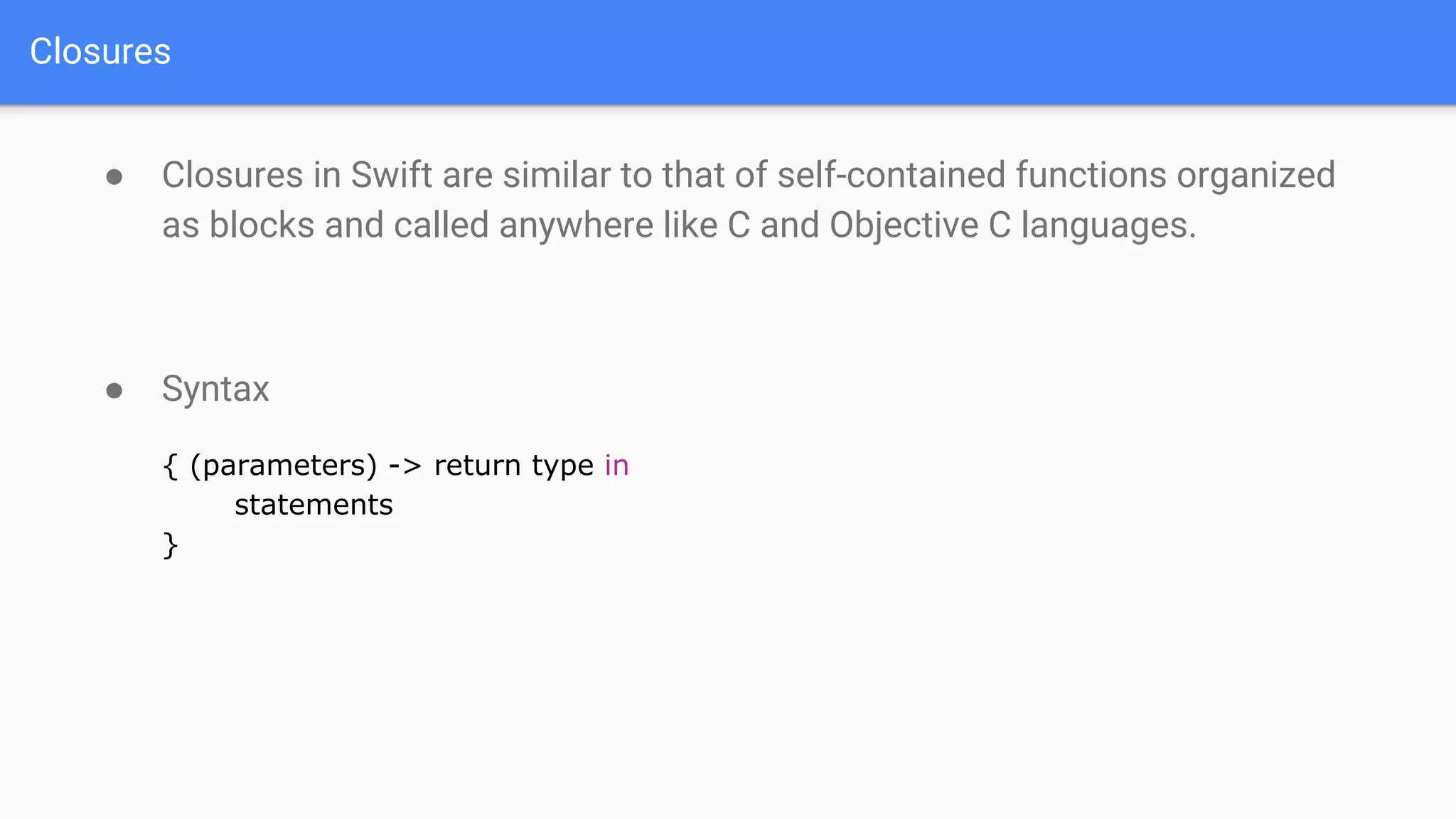
![Closures example
let names = ["Chris", "Alex", "Ewa", "Barry", "Daniella"]
func backward(_ s1: String, _ s2: String) -> Bool {
return s1 > s2
}
var reversedNames = names.sorted(by: backward)
// reversedNames is equal to ["Ewa", "Daniella", "Chris", "Barry", "Alex"]](https://image.slidesharecdn.com/fromandroid2fjavatoswift-180706024806/75/From-android-java-to-swift-1-12-2048.jpg)
![Closures example
let names = ["Chris", "Alex", "Ewa", "Barry", "Daniella"]
var reversedNames = names.sorted(by: { (s1: String, s2: String) -> Bool in
return s1 > s2
})](https://image.slidesharecdn.com/fromandroid2fjavatoswift-180706024806/75/From-android-java-to-swift-1-13-2048.jpg)
![Inferring Type From Context
let names = ["Chris", "Alex", "Ewa", "Barry", "Daniella"]
var reversedNames = names.sorted(by: { s1, s2 in return s1 > s2 } )
// reversedNames is equal to ["Ewa", "Daniella", "Chris", "Barry", "Alex"]](https://image.slidesharecdn.com/fromandroid2fjavatoswift-180706024806/75/From-android-java-to-swift-1-14-2048.jpg)
![Implicit Returns from Single-Expression Closures
let names = ["Chris", "Alex", "Ewa", "Barry", "Daniella"]
var reversedNames = names.sorted(by: { s1, s2 in s1 > s2 } )
// reversedNames is equal to ["Ewa", "Daniella", "Chris", "Barry", "Alex"]](https://image.slidesharecdn.com/fromandroid2fjavatoswift-180706024806/75/From-android-java-to-swift-1-15-2048.jpg)
![Shorthand Argument Names
let names = ["Chris", "Alex", "Ewa", "Barry", "Daniella"]
var reversedNames = names.sorted(by: { $0 > $1 } )
// reversedNames is equal to ["Ewa", "Daniella", "Chris", "Barry", "Alex"]](https://image.slidesharecdn.com/fromandroid2fjavatoswift-180706024806/75/From-android-java-to-swift-1-16-2048.jpg)
